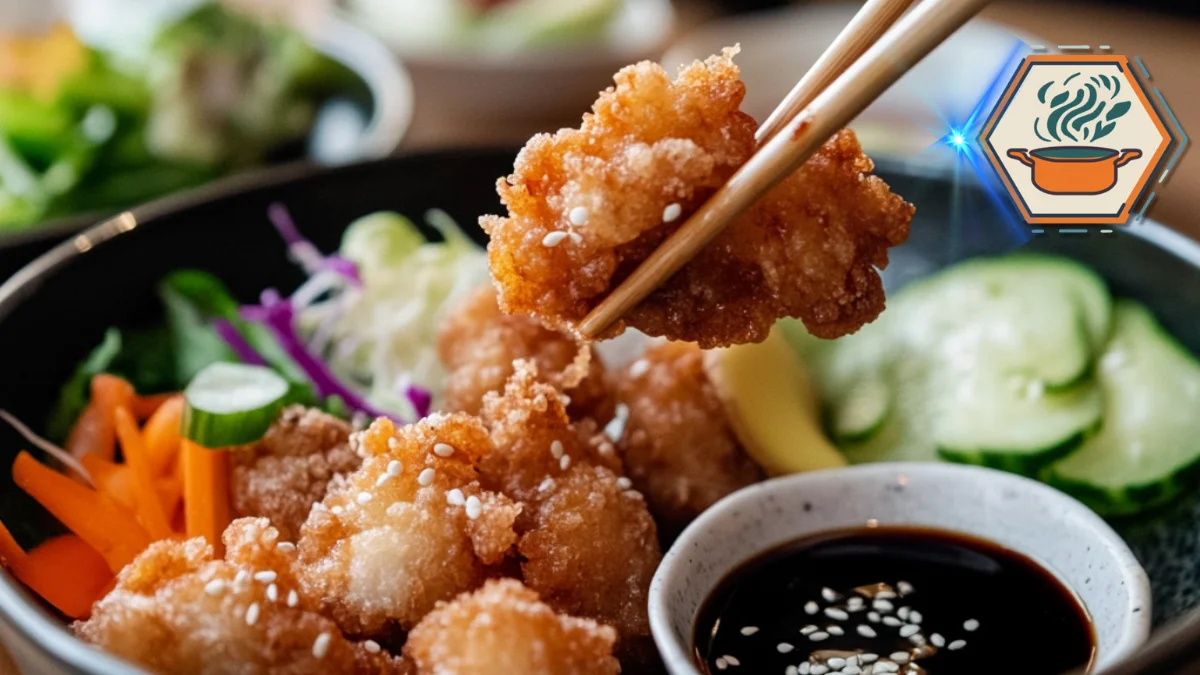Time to read:18 minutes
Table of Contents
Understanding Tempura Chicken
What is Tempura Chicken?
Tempura chicken is a Japanese dish that consists of tender pieces of chicken coated in a light, crispy batter and deep-fried until golden. Known for its delicate texture and airy crunch, tempura chicken has gained worldwide popularity as part of Japanese cuisine. Unlike heavily breaded fried chicken, tempura relies on a specific type of batter that creates a thin yet crisp coating.
Origin of Tempura-Style Cooking
The history of tempura can be traced back to the 16th century when Portuguese missionaries introduced the concept of batter-fried foods to Japan. The term tempura is believed to originate from the Latin word “tempora,” referring to the fasting days when the Portuguese would refrain from eating meat but instead consumed fried fish and vegetables. The Japanese adopted this cooking style, enhancing the batter and technique to cater to their local tastes.
Over time, tempura evolved into a cornerstone of Japanese cuisine, particularly during the Edo period. It became popular as a street food in Tokyo (formerly Edo), where vendors sold tempura made with fresh seafood and vegetables. The versatility of the tempura batter eventually led to innovations like tempura chicken, appealing to those who preferred a meat-based alternative.
For a more in-depth look at Japanese cuisine history, you can visit the Wikipedia page on Japanese cuisine.
Ingredients That Make Up Tempura Batter
The secret to tempura chicken’s light and crispy texture lies in its unique batter. Unlike traditional batters, tempura uses a minimalistic approach with only a few essential ingredients:
- Flour: Typically, cake flour or all-purpose flour with low gluten content is used to create a delicate coating. Some recipes call for rice flour to make the batter extra light and gluten-free.
- Ice-cold Water: Cold water is critical for preventing gluten development, which keeps the batter thin and airy.
- Eggs: A beaten egg is often added to the batter to give it structure and a golden hue when fried.
- Optional Seasonings: A pinch of salt or baking powder can be added to enhance flavor and ensure crispiness.
The batter must be mixed lightly and left slightly lumpy to avoid overdeveloping the gluten, which could make the tempura dense.
Difference Between Tempura Chicken and Other Fried Chicken
While tempura chicken may resemble other fried chicken dishes at first glance, the differences lie in the batter and frying process:
- Batter Thickness: Traditional fried chicken often uses thicker batters made from flour, breadcrumbs, or cornmeal. In contrast, tempura batter is much lighter and thinner.
- Crispiness: Tempura chicken boasts a delicate, airy crispness achieved by using ice-cold water and a quick frying process at high temperatures.
- Oil Used: Tempura is typically fried in neutral oils like vegetable or canola oil to ensure that the batter’s flavor shines through without being overpowered.
- Cooking Time: Tempura chicken is fried for a shorter duration to maintain the juiciness of the meat while keeping the batter crisp.
- Cultural Origins: While tempura is rooted in Japanese culinary traditions, other fried chicken dishes like Southern fried chicken hail from Western cuisines.
Why is Tempura Chicken Unique?
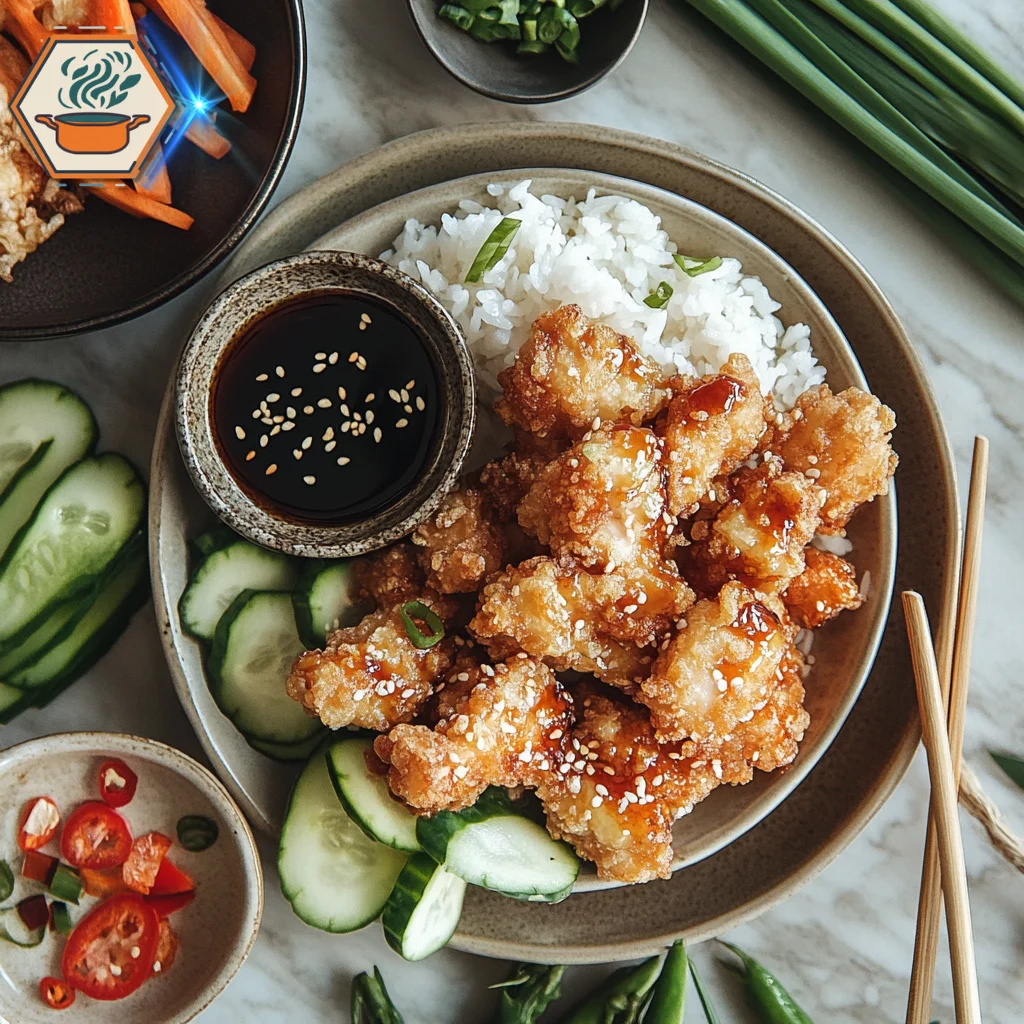
Tempura chicken stands out for its light and crispy texture, delicate flavor, and simple yet precise cooking techniques. These elements set it apart from other fried dishes and make it a popular choice in both Japanese restaurants and home kitchens worldwide.
The Light and Crispy Texture of the Batter
The hallmark of tempura chicken is its airy crispness, which comes from its carefully prepared batter. By using ice-cold water and minimal stirring, the batter avoids developing excess gluten, resulting in a lighter texture. Additionally, tempura batter is applied in a thin layer, allowing the natural flavor of the chicken to shine through.
The frying process also plays a key role in achieving this texture. Tempura chicken is cooked at high temperatures (typically around 340-350°F or 170-180°C), which rapidly crisps the batter without overcooking the meat inside. This method creates a contrast between the crispy coating and the tender, juicy chicken.
Cooking Techniques That Make Tempura Special
The art of making perfect tempura chicken lies in a few essential techniques:
- Temperature Control: Keeping the frying oil at the right temperature ensures that the batter crisps quickly without absorbing too much oil.
- Cold Batter: Using ice-cold water and even adding ice cubes to the batter prevents gluten formation and enhances the crispiness.
- Minimal Mixing: Overmixing the batter develops gluten, which makes the coating dense rather than light and crispy.
- Quick Frying: Tempura chicken is fried in small batches for a short time to prevent overcrowding and ensure an even texture.
These techniques require precision, making tempura cooking both an art and a science.
How Tempura Differs from Deep-Fried or Breaded Dishes
While deep-fried and breaded chicken dishes are enjoyed worldwide, tempura chicken offers a unique eating experience:
- Breading vs. Batter: Breaded chicken uses layers of flour, egg wash, and breadcrumbs, creating a dense, crunchy crust. Tempura batter, on the other hand, is thin and crispy without the heaviness.
- Flavor Focus: The mild batter of tempura highlights the natural taste of the chicken rather than overpowering it with strong seasonings.
- Crispiness: Tempura’s light, airy crispness is unmatched by other frying methods.
For readers looking for other Japanese recipes and cooking techniques, check out our article on What does a tempura roll have in it?
Nutritional Value of Tempura Chicken
Tempura chicken, while delicious, is often considered a treat due to its frying process. When consumed in moderation, it can contribute to a balanced diet. Here’s a breakdown of its nutritional components and tips for making healthier versions at home.
Caloric Breakdown and Key Nutrients
A serving of tempura chicken (approximately 100 grams) contains the following nutritional values:
- Calories: 250-300 kcal
- Protein: 15-20 grams (depending on the chicken cut)
- Fat: 15-18 grams
- Carbohydrates: 12-15 grams
- Sodium: Varies based on batter seasoning and dipping sauces
Tempura chicken is a good source of protein but also contains fat and carbohydrates due to the frying process. The key to enjoying tempura chicken is portion control and pairing it with healthier sides like steamed vegetables or salads.
Tempura Chicken as Part of a Balanced Diet
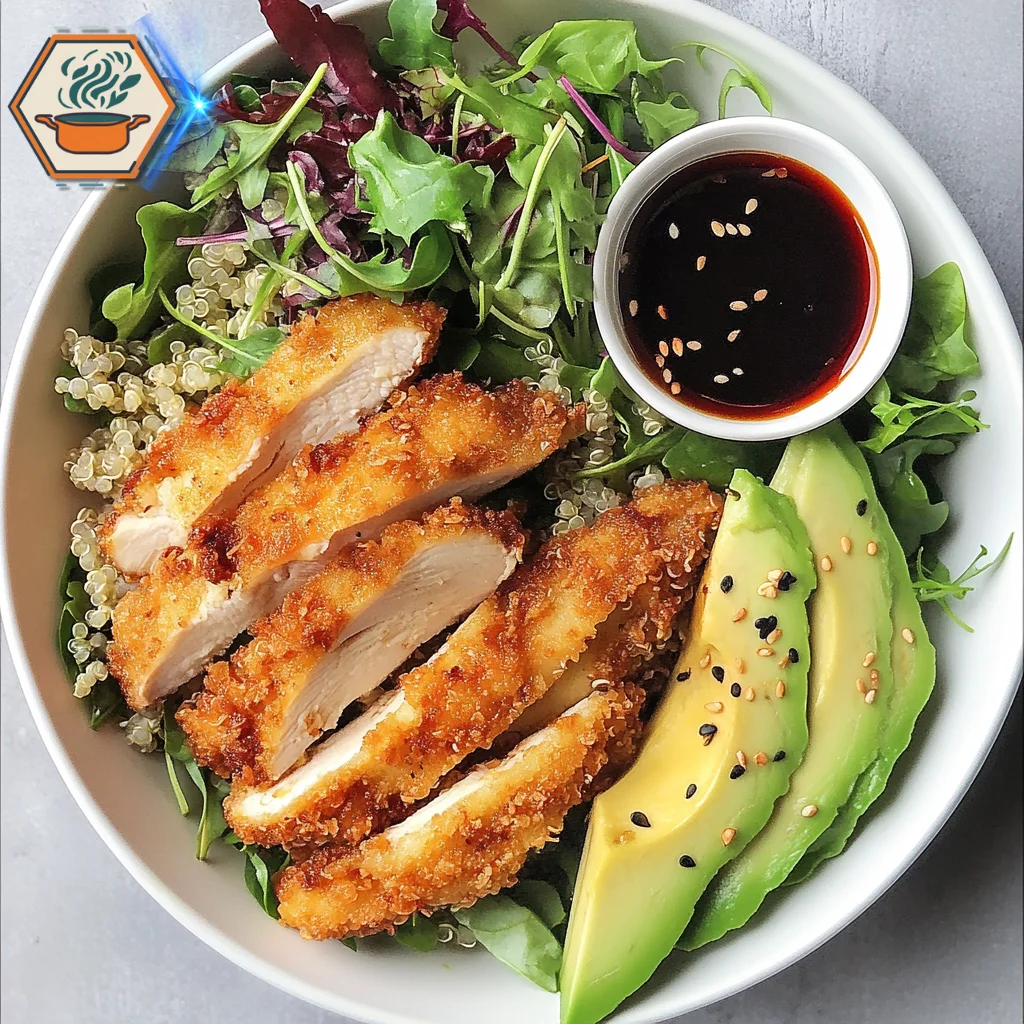
While tempura chicken is not an everyday food for those watching their caloric intake, it can be incorporated into a balanced diet:
- Protein Source: The chicken provides essential amino acids for muscle repair and growth.
- Pair with Veggies: Serve tempura chicken with lightly steamed vegetables, like broccoli, carrots, or green beans, to increase fiber intake.
- Limit Fried Foods: Enjoy tempura chicken in moderation and balance it with other healthier meals throughout the day.
Healthier Alternatives for Cooking Tempura
If you love tempura chicken but want a lighter option, consider these healthier alternatives:
- Air Frying: Using an air fryer significantly reduces the amount of oil while maintaining a crispy texture.
- Baking: Oven-baking tempura chicken at high heat can yield a similar result to frying with far fewer calories.
- Alternative Flours: Substitute regular flour with rice flour or almond flour for gluten-free and lower-carb options.
- Lean Chicken Cuts: Opt for chicken breast instead of thighs to reduce fat content.
By making small adjustments, you can enjoy tempura chicken without compromising on health.
How to Eat Tempura Chicken Properly
Tempura chicken, a beloved dish in Japanese cuisine, is best enjoyed when eaten the right way. Whether dining at a traditional Japanese restaurant, preparing it at home, or grabbing a quick bite at a street food stall, following proper dining customs enhances the experience. From dipping sauces to pairing with complementary sides, there are specific practices that make eating tempura chicken both delicious and culturally authentic.
Traditional Ways to Enjoy Tempura Chicken
To fully appreciate tempura chicken, understanding traditional Japanese dining customs is essential. These customs bring structure and elegance to the meal while highlighting the flavors of the dish.
Common Japanese Dining Customs
- Sit in the correct posture: When enjoying a Japanese meal, sitting with a straight posture shows respect for the food and the dining experience.
- Begin with gratitude: Say “Itadakimasu” before starting the meal to express appreciation.
- Eat quietly and savor the flavors: Loud eating is often considered impolite. Focus on tasting the delicate crunch and flavor of the tempura batter.
- Use chopsticks correctly: Avoid stabbing food with chopsticks or passing food directly to another person’s chopsticks, as these gestures have specific cultural meanings.
These customs ensure the meal feels intentional and respectful, a cornerstone of Japanese culinary traditions.
Serving Tempura Chicken with Dipping Sauces
Tempura chicken is rarely served alone. It is always accompanied by flavorful dipping sauces that complement its crispy texture. The most popular dipping sauce is Tentsuyu, a traditional soy-based sauce infused with umami flavors. It’s typically served warm, offering a savory depth that enhances the chicken’s light batter.
Other common dipping sauces include:
- Ponzu sauce: A citrusy, tangy sauce that adds brightness.
- Spicy mayo: A creamy, modern addition that balances spice with richness.
- Sesame-based dressings: Nutty and slightly sweet, perfect for a unique twist.
By experimenting with different sauces, you can enjoy tempura chicken in multiple ways while still respecting its traditional roots.
Pairing Tempura Chicken with Other Foods
Tempura chicken is versatile and pairs well with various foods, allowing for a balanced and fulfilling meal. Here are some ideal pairings:
- Steamed rice: Plain steamed rice serves as a neutral base, highlighting the savory crispiness of tempura chicken.
- Miso soup: The rich, salty flavors of miso soup contrast perfectly with the light and crispy texture of the tempura.
- Japanese pickles (Tsukemono): These lightly pickled vegetables add a refreshing crunch and slight acidity, cutting through the heaviness of fried food.
- Vegetables: Tempura vegetables like sweet potatoes, mushrooms, and zucchini can accompany the chicken for variety and texture.
For a complete dining experience, combining tempura chicken with these traditional side dishes brings harmony to the meal.
Essential Dipping Sauces for Tempura Chicken
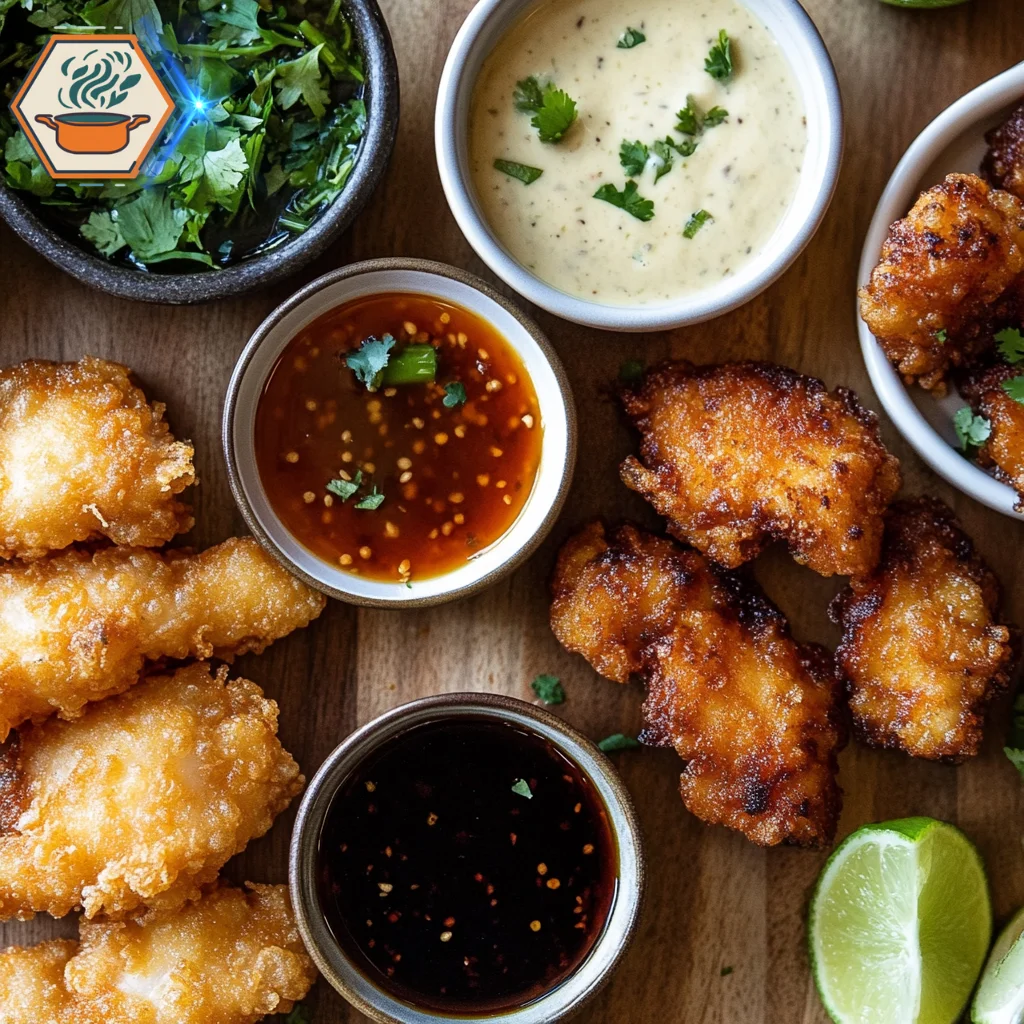
The dipping sauces are just as important as the tempura chicken itself. They are designed to enhance and elevate the dish’s natural flavors. Here is a closer look at classic and modern options.
Classic Tempura Dipping Sauce (Tentsuyu)
Tentsuyu is the traditional and most widely used dipping sauce for tempura. It’s a simple mixture of the following ingredients:
- Dashi Broth: A traditional Japanese stock prepared with kombu (kelp) and bonito flakes.
- Soy sauce: Adds salty, umami-rich flavors.
- Mirin: A sweet rice wine that balances the saltiness.
- Grated daikon radish: Often added as a garnish to bring a mild, peppery note.
Tentsuyu is served warm and should be used sparingly, as it’s meant to complement, not overpower, the delicate batter of the chicken.
Modern Variations: Soy Sauce, Spicy Mayo, and Citrus-Based Dressings
For those who enjoy bold and contemporary flavors, modern dipping sauces provide exciting alternatives to Tentsuyu. Some popular options include:
- Soy Sauce with Citrus (Ponzu): Adds a refreshing zest that balances the fried richness of tempura chicken.
- Spicy Mayo: A blend of Japanese mayonnaise and sriracha for a creamy and slightly spicy kick.
- Yuzu-based dressings: Yuzu, a Japanese citrus fruit, brings tart and aromatic notes, elevating the dish with a unique flavor profile.
Recipes for Homemade Tempura Sauces
Creating dipping sauces at home is straightforward and allows for customization. Here is a quick recipe for Tentsuyu:
Ingredients:
- 1 cup dashi broth
- 1/4 cup soy sauce
- 1/4 cup mirin
- 1 tablespoon grated daikon radish
Instructions:
- Combine the dashi, soy sauce, and mirin in a small saucepan.
- Heat the mixture on low until warm (do not boil).
- Serve with freshly grated daikon radish on the side.
For a homemade spicy mayo, mix:
- 1/2 cup Japanese mayonnaise (like Kewpie)
- 1 tablespoon sriracha sauce
- A squeeze of fresh lemon juice
These simple recipes allow you to recreate authentic flavors in the comfort of your home.
Perfect Side Dishes for Tempura Chicken
The perfect meal featuring tempura chicken wouldn’t be complete without thoughtfully chosen side dishes. Japanese cuisine emphasizes balance, where flavors and textures harmonize.
Popular Japanese Side Dishes
- Steamed Rice: A staple in Japanese meals, plain rice balances the richness of the tempura batter.
- Soba Noodles: Light and nutty, served either hot or cold, soba noodles offer a satisfying and healthy pairing.
- Pickled Vegetables: Known as Tsukemono, pickled vegetables like cucumbers and daikon radish bring a refreshing crunch and acidity.
Light Salads and Pickled Vegetables
Fresh salads and lightly pickled vegetables can complement tempura chicken perfectly. Consider options like:
- Cabbage salad: Shredded cabbage with a light sesame dressing provides a crisp, refreshing contrast.
- Seaweed salad: Rich in minerals and flavor, seaweed salad adds a unique texture and subtle umami notes.
- Sunomono: A light cucumber salad with vinegar dressing that cuts through the heaviness of fried foods.
Soup Pairings That Complement Tempura Flavors
Soups play an important role in Japanese meals. Pairing tempura chicken with the right soup enhances the overall dining experience.
- Miso Soup: The traditional choice, with its rich broth, tofu, and seaweed, balances the dish’s crispy texture.
- Clear Japanese soup (Suimono): A light and subtle broth made from dashi stock, offering a clean, refreshing flavor.
- Udon Soup: Thick, chewy noodles served in a light soy-based broth make for a heartier pairing.
Including these side dishes ensures a complete, balanced, and flavorful meal.
Eating Tempura Chicken with Utensils
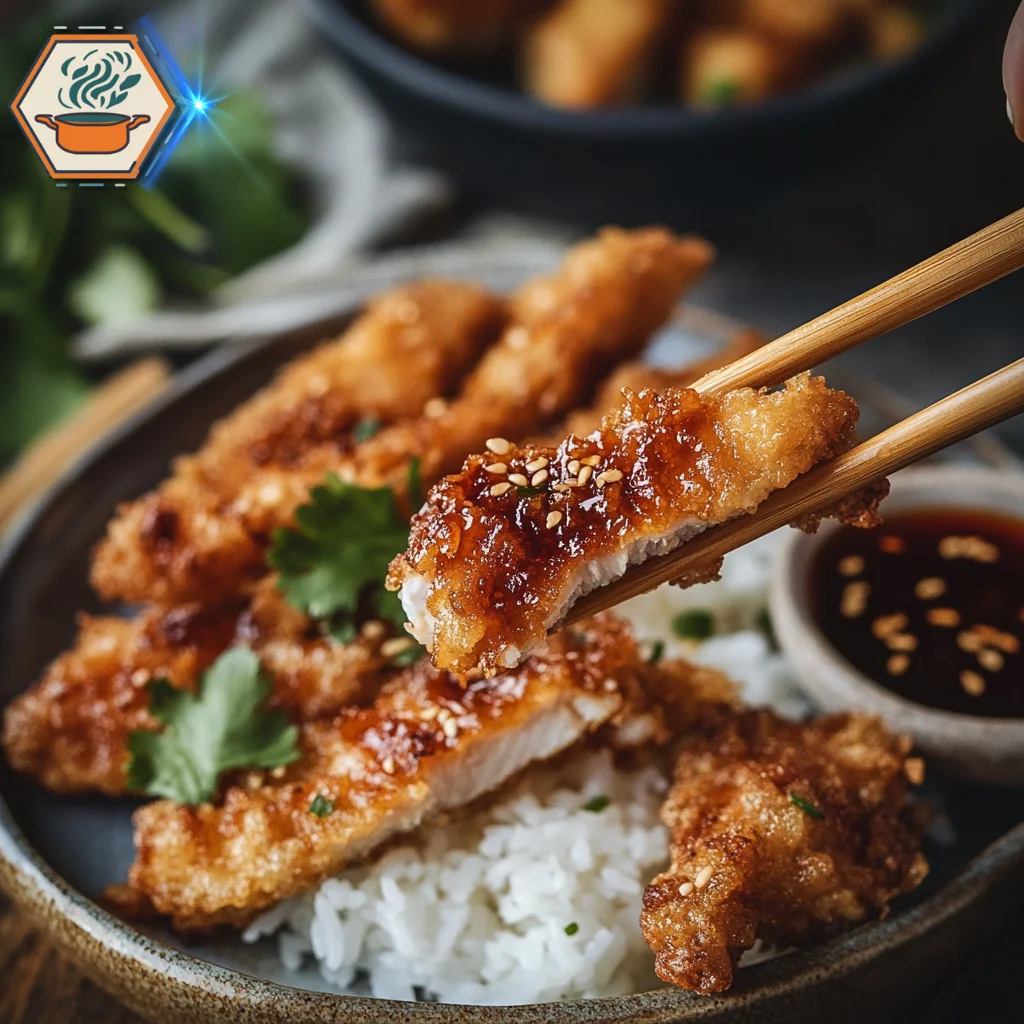
Understanding how to properly use utensils when eating tempura chicken adds to the authenticity of the experience.
Chopstick Etiquette: How to Handle Tempura Chicken
Using chopsticks is the preferred method when eating tempura chicken. Here are some tips for handling chopsticks correctly:
- Place the upper chopstick between your thumb, index, and middle fingers.
- The lower chopstick remains stationary, resting on the base of your thumb and ring finger.
- Use gentle, precise movements to pick up the tempura chicken without breaking the crispy batter.
Tip: Avoid tapping or pointing with chopsticks, as this is considered impolite in Japanese culture.
Alternative Utensils for Those Unfamiliar with Chopsticks
If you are not comfortable using chopsticks, it’s acceptable to use a fork and knife in casual settings. However, in traditional restaurants, it is best to practice and respect the custom of chopstick usage.
When and Where to Eat Tempura Chicken
Tempura chicken can be enjoyed in various settings, depending on the occasion and level of formality.
Best Dining Settings
- Restaurants: High-end Japanese restaurants serve tempura chicken as part of a multi-course meal, often paired with seasonal vegetables.
- Home-Cooked Meals: Making tempura chicken at home allows for creativity in sauces and side dishes.
- Street Food Stalls: Street vendors serve tempura chicken as a quick snack, often in paper cones or skewers, ideal for on-the-go eating.
Fusion Recipes Featuring Tempura Chicken
Tempura chicken’s light, crispy texture pairs beautifully with a wide variety of cuisines. Here are some modern fusion ideas to inspire your next culinary adventure:
Tempura Chicken Sushi Rolls
Combine two iconic Japanese dishes by incorporating tempura chicken into sushi rolls. The contrast of crunchy chicken with fresh ingredients like avocado, cucumber, and spicy mayo creates an unforgettable flavor profile.
How to Make Tempura Chicken Sushi Rolls:
- Start with a sheet of nori (seaweed) placed on a sushi mat.
- Evenly spread a thin layer of seasoned sushi rice across the nori.
- Add sliced tempura chicken, avocado, and julienned cucumbers.
- Roll tightly, applying gentle pressure to maintain shape.
- Slice the roll into bite-sized pieces and drizzle with spicy mayo or soy sauce for an added kick.
Expert Tip: Sprinkle sesame seeds on top for added flavor and an appealing presentation.
Tempura Chicken Wraps and Sandwiches
Transform classic wraps and sandwiches with a tempura chicken twist. Use soft tortillas or artisan bread to create a delicious handheld meal.
Recipe Ideas:
- Tempura Chicken Caesar Wrap: Toss tempura chicken with Caesar dressing, romaine lettuce, and shredded Parmesan in a tortilla wrap.
- Tempura Chicken Club Sandwich: Layer crispy tempura chicken with bacon, lettuce, tomato, and garlic aioli on toasted sourdough bread.
- Sweet and Spicy Wrap: Add tempura chicken to a wrap with mango salsa, jalapeño slices, and a drizzle of honey.
These wraps and sandwiches are perfect for quick lunches or casual dinners. Pair them with a light salad or crispy sweet potato fries.
Tempura Chicken Tacos
Tacos are a fun and creative way to enjoy tempura chicken, offering endless possibilities for toppings and sauces.
How to Make Tempura Chicken Tacos:
- Warm up small flour or corn tortillas.
- Fill each taco with crispy tempura chicken strips.
- Add toppings like shredded cabbage, pickled onions, and cilantro.
- Finish with sauces like sriracha mayo, teriyaki glaze, or lime crema.
Flavor Tip: For an Asian-Mexican fusion, add fresh pineapple chunks and a sprinkle of chili powder.
Healthier Twists on Tempura Chicken
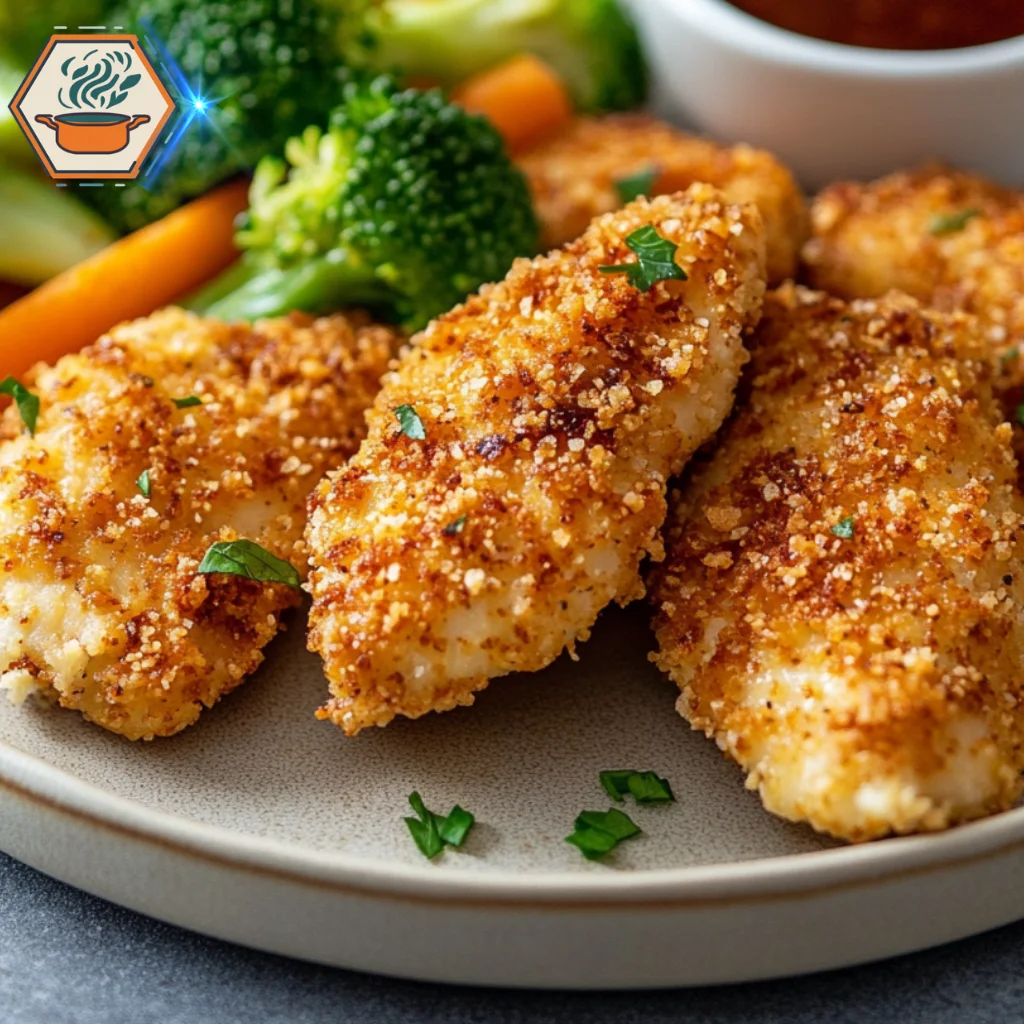
While tempura is known for its indulgent crispiness, there are healthier alternatives that retain the dish’s appeal without compromising on flavor.
Air-Frying or Baking Tempura Chicken
Instead of deep-frying, consider air-frying or baking tempura chicken. This reduces oil content while still achieving a crispy texture.
- Air-Frying: Coat tempura-battered chicken pieces lightly with oil spray and air fry at 375°F (190°C) for 10-12 minutes.
- Baking: Place tempura chicken on a parchment-lined baking sheet and bake at 400°F (200°C) for 15-20 minutes, flipping halfway through.
Using Alternative Flours for the Batter
Switching to alternative flours can make your tempura batter lighter and gluten-free while enhancing the dish’s nutritional value:
- Rice Flour: Naturally gluten-free and ideal for creating a crispy batter.
- Almond Flour: Adds a subtle nutty flavor and is low in carbs.
- Chickpea Flour: A high-protein alternative that provides a satisfying crunch.
Gluten-Free and Low-Fat Tempura Options
For a gluten-free version, mix rice flour and cornstarch with sparkling water to create a light batter. Pair this with air-frying techniques to further reduce fat content.
Pairing Drinks with Tempura Chicken
Pairing the right beverage with tempura chicken enhances its flavor and dining experience. Here are both traditional and modern drink pairings:
Traditional Japanese Beverages
- Sake: A mild, slightly sweet sake balances the light and crispy flavors of tempura chicken.
- Green Tea: The subtle bitterness of green tea contrasts beautifully with the richness of the tempura batter.
Modern Pairings
- Light Beers: Crisp, light lagers or pilsners complement the fried texture without overwhelming the palate.
- Sparkling Water: Adds refreshment and helps cleanse the palate.
- White Wine: Choose dry white wines like Sauvignon Blanc or Pinot Grigio to enhance the lightness of the dish.
How to Serve Tempura Chicken for Gatherings
Tempura chicken is an excellent option for parties and family dinners. Its versatility allows you to create stunning platters and presentations that will impress guests.
Making a Tempura Platter
Create a visually appealing tempura platter by combining tempura chicken with assorted vegetables like zucchini, sweet potatoes, and bell peppers. Serve with dipping sauces such as soy sauce, spicy mayo, or ponzu.
Presentation Ideas
- Garnishes: Use fresh herbs like parsley, scallions, or microgreens to add color.
- Plating Styles: Serve tempura on wooden boards, slate plates, or bamboo trays for a rustic look.
Pro Tip: To keep tempura crispy while serving, avoid stacking pieces. Use wire racks or perforated trays to allow airflow.
FAQs About Eating Tempura Chicken
Can you reheat tempura chicken and maintain its crunch?
Yes, reheat tempura chicken in an oven or air fryer at 375°F (190°C) for 5-10 minutes. Avoid using a microwave as it makes the batter soggy.
What’s the best sauce for tempura chicken?
The most popular sauces include soy sauce, spicy mayo, and teriyaki glaze. For a zesty twist, try ponzu sauce.
How do you make tempura batter light and crispy?
Use ice-cold sparkling water when mixing the batter and avoid overmixing. This keeps the batter light and airy.
Is tempura chicken better eaten fresh or cold?
Tempura chicken is best enjoyed fresh when the batter is crispy. However, it can also be eaten cold in dishes like sushi rolls or bento boxes.

